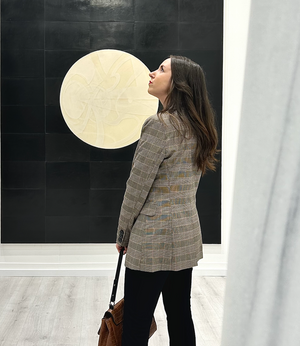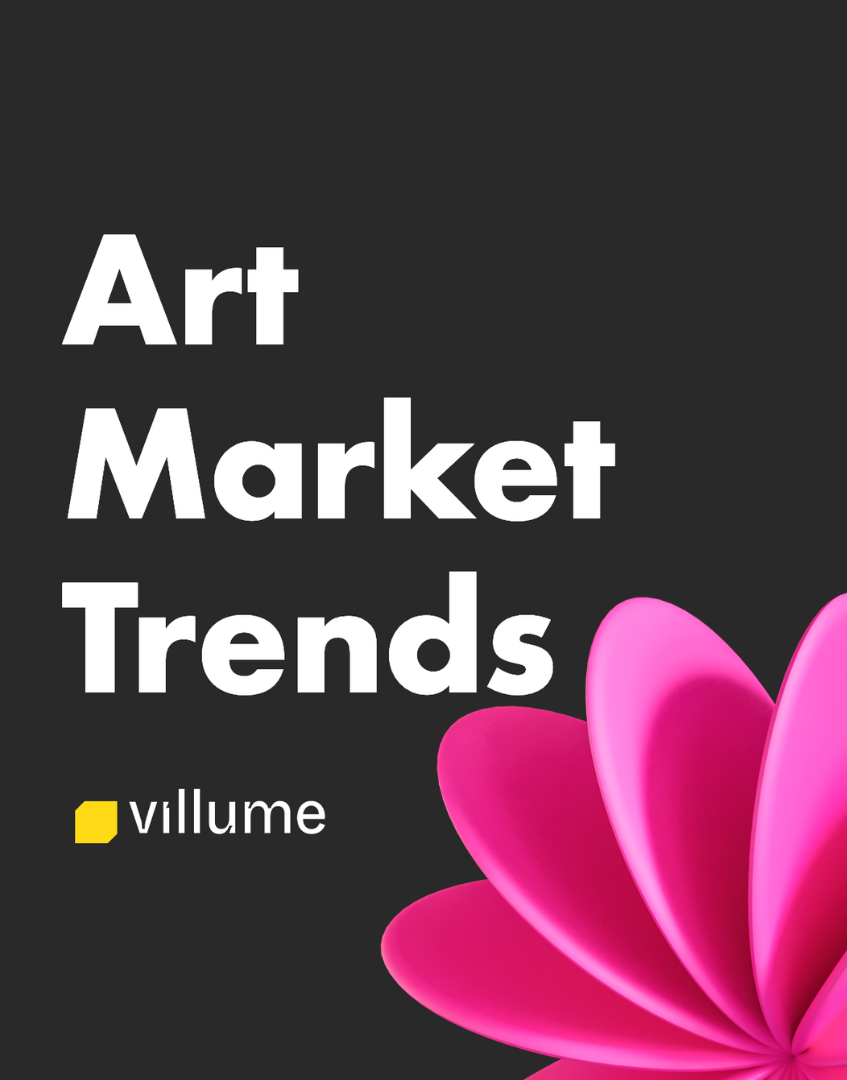As 2023 draws to a close, let’s reflect on the Art Market trends of the year and offer insights into what we can anticipate in 2024.
This article highlights key aspects that defined the Art Market in 2023, drawing from data sourced from the recently published Art Basel and UBS report (1), authored by Clare McAndrew, the founder of Arts Economics.
The Art Market Trends in 2023
A double-digit drop in auction sales in the first half of the year is an indicator of some of the sector's issues. Sales at prominent international auction houses Christie's, Sotheby's, Phillips, and Bonhams declined by 16% compared to the same time in 2022. Despite this, global commerce in art and antiquities remained buoyant in the first quarter of the year, with considerable rises in key art markets such as Hong Kong, the United Kingdom, and the United States.
The majority of collectors (86%) bought artworks through a dealer, with a significant portion of these acquisitions (84%) happening in-person at a gallery. Purchases at art fairs, on the other hand, fell from 74% to 58%. Auctions were the second most popular sales channel among collectors, with nearly three-quarters of them planning to buy at auction in the first half of 2023.
When it comes to constructing their art collections, most collectors are driven by personal enjoyment, with financial considerations ranking second. Almost half (47%) of those who collect for financial reasons have resold their pieces.
According to the survey, the overall average spending on art and antiques by HNW collectors in the first half of 2023 stayed the same as in 2022, $65,000, indicating potential yearly increase. HNW collectors' confidence remains high, with respondents stating they aim to increase their spending year on year, and mainland Chinese collectors spending the most in the first half of 2023: a solid return after the lockdown.
Paintings dominated spending, accounting for 58%, while digital artworks received 3% of the budget, constituting 8% of collections—a decline from the previous year’s 15%.
In 2023, Gen X collectors outspent younger collectors, with the greatest average expenditure on artworks (145,000 $ vs 108,000 $ for Millennials). Millennials spent more on sculpture, installations, photography, and film or video art. Surprisingly, Gen Z collectors are the top spenders when it comes to prints and digital art.
Collectors Are Traveling Less: A Good Opportunity for Digital Exhibitions
The report indicates a reduction in collector travel, with an average attendance at four fairs in 2023 compared to five in the pre-pandemic year of 2019. Collectors reported attending 32 art-related events in 2023, nine fewer than in 2019, displaying selectivity in gallery exhibitions, art fairs, visits to artists’ studios, and major visual arts festivals.
Collectors tend to travel less for various reasons, paving the way for an increase in digital art shows on platforms like Villume. This platform was developed in collaboration with artists and gallerists to offer an ideal environment for showcasing artwork. With multiple templates to choose from, artists can create a unique exhibition with customizable interiors. For gallery owners, Villume can recreate a digital version of their existing space, providing a strategic approach to reaching more collectors and allowing all artists to showcase their work. As an artist, Villume can be a valuable ally. Utilize their customizable virtual galleries to professionally exhibit your latest work, making it easy to showcase your exhibition wherever you go.
Art Market Forecasts for 2024
Looking ahead to 2024, the majority of collectors (92%) express a desire to continue visiting art-related exhibits and shows, either at the same rate (43%) or even higher (49%).
Collectors appear to be more selective in their art purchases than in previous years. High interest rates, which raise the cost of loans to buy art, might potentially have a discouraging impact. However, more than half of collectors anticipate purchasing pieces of art for a similar amount as last year.
77% of collectors polled are optimistic about the art market's performance over the next six months, reflecting the sector's durability.
Main Takeaways
In conclusion, the trends observed in the Art Market in 2023 reflect a dynamic landscape marked by challenges and adaptations. Despite a double-digit decline in auction sales in the first half of the year, the resilience of international trade in art and antiques prevailed, with HNW collectors expressing confidence and increasing spending, particularly among mainland Chinese collectors. The return of in-person buying, primarily at galleries, indicates a shift from art fairs, and collectors' motivations highlight a balance between personal pleasure and financial investments.
Notably, the reduced inclination to travel among collectors presents a unique opportunity for the digitalization of exhibitions. In this context, Villume emerges as a promising platform for gallerists and artists alike. Villume offers a comprehensive digital space for exhibitions, providing customizable templates and support for creating unique displays. For gallerists, it presents a strategic resource to reach a wider audience, while artists can use Villume's virtual galleries to professionally showcase their work globally. With its emphasis on digital exhibitions, the platform appears well-positioned within the evolving dynamics of the art world, bridging the gap between traditional shows and the increasing digitalization of the industry.
As for the Art Market forecasts for 2024, the data suggests a cautious optimism, with collectors remaining selective in their acquisitions and a notable confidence in the market's resilience.
(1) McAndrew, Clare. 2023. The Survey of Global Collecting in 2023. Basel, Switzerland: Art Basel in association with UBS.
https://theartmarket.artbasel.com/download/The-Art-Basel-and-UBS-Survey-of-Global-Collecting-in-2023.pdf.


